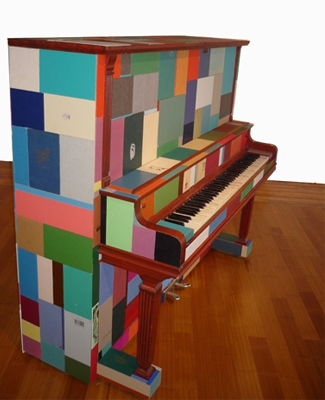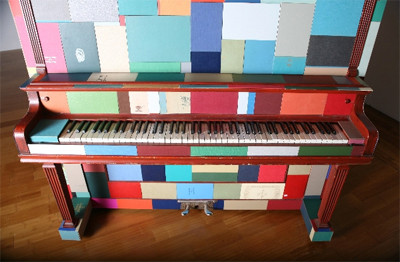Most booksellers have had this experience at least once or twice in their careers: selling a book based on a single sentence uttered to a receptive ear. It’s a rare and delicious triumph of communication, a gift given by the booktalking muse, and it delights customers as much as it delights booksellers.
Sometimes, a book provides you with that magical line—often its first sentence—and all one needs to do is read it aloud to a customer and the book is sold. For instance, Frances Marie Hendry’s marvelous Quest for a Maid begins with this stunner: “When I was nine years old, I hid under a table and heard my sister kill a king.” That’s all a kid needs to hear to want to read that book. The same is true of Avi’s True Confessions of Charlotte Doyle, which starts thusly: “Not every thirteen-year-old-girl is accused of murder, brought to trial, and found guilty.” The reader is hooked like a pike on a piece of year-old Velveeta.
Not every great first line is enough to sell a customer on a book, though. Perhaps the most famous first line in children’s literature is “Where’s Pa going with that ax?” from E.B. White’s Charlotte’s Web. The line certainly earns a reader’s riveted attention, but a bookseller definitely has to add a little bit about Charlotte and Wilbur to that booktalk (at least, if the customer has been living on Neptune for the past century and doesn’t already know the book). And a little extra description is required for one of my favorite first lines, from M.T. Anderson’s Feed: “We went to the moon to have fun, but the moon turned out to completely suck.” It’s a perfect piece of immediate world-building, but doesn’t give a customer a sense of the plot — so you need a second sentence. But that’s all it takes.
In our store, the most common single-sentence sales come from simply saying that one of our booksellers loved it. These aren’t bookstore-muse-inspired one-liners, but it’s certainly gratifying to make sales based on that level of trust our customers have for our staff members.
The key to the one-liner is that it has to lure the reader with something irresistible, something intriguing or powerful or magical or mysterious that invites a deeper relationship with the book. It also has to be sincere, enthusiastic, and heartfelt. I’m sure the expressions on our faces that sell books as much as the words we use. People can see it in your eyes when you’ve loved a book, lived it, want to share it with others. Here are some of the one-line (or one-phrase) descriptions we give that seem to do the trick for readers.
The Boxes, by William Sleator: “A boy’s mysterious uncle gives him a package to hide, instructing him never to open it—and then the box in his closet begins to tick.”
A Barrel of Laughs, A Vale of Tears, by Jules Feiffer: “There’s a prince so silly that everyone falls down laughing near him, so his father the king thinks he’ll make a terrible ruler someday and sends him on a quest to be serious.”
The Hunger Games, by Suzanne Collins: “It’s got a really brutal premise, but it’s amazing.” That’s enough for kids. For writers and teachers, I add: “and it’s the most perfectly paced book I’ve ever read.”
Life as We Knew It, by Susan Beth Pfeffer: “A meteor hits the moon off-course, causing major natural disasters, and a typical teenage girl’s whole life, everything she’s ever known and counted on, begins to unravel.” That’s enough to hook a reader, and as we walk toward the front desk, we like to add that it’s a one-sitting read, and that the customer is going to start obsessing about survival supplies.
Gerald Durrell’s My Family and Other Animals: “It’s like reading bottled sunshine.”
The Count of Monte Cristo, by Alexandre Dumas: “This is a great summer read: an epic potboiler full of betrayal, revenge, prison escapes, duels, star-crossed lovers, rags and riches.”
The Last of the Really Great Whangdoodles, by Julie Andrews Edwards: “Three kids meet this funny little professor who needs their help to get to the magical Whangdoodleland and rescue the last whangdoodle.” For adults, I add: “And it’s by Julie Andrews, one of the few celebrities who writes beautifully for children.”
Mrs. Biddlebox, by Linda Smith and illustrated by the inimitable Marla Frazee: “It’s the perfect book for anyone who’s caught in a black cloud at the moment, and the illustrations are remarkable.” I love this book so much, and always felt it didn’t get the attention it deserved.
Weslandia, by Paul Fleischman: “A boy who’s kind of a loner, and not like most other kids, is incredibly original and starts building his own society, which unexpectedly brings him all kinds of friends.” (This one works well because every kid feels different from other kids, and wants to create a world where everyone belongs. Or, um, was that just me?)
The nearly wordless sell:
I think Josie has written about this exchange before, but it was such a funny/wonderful bookstore moment that I’m repeating it. She had recommended Markus Zusak’s The Book Thief to a customer, commenting that it was in my personal top ten or twenty favorite books of all time. The customer came up to the counter, caught my eye, and said, “It’s really that good?” All I did was look at her, my face revealing, I guess, every bit of the awe and power and compassion and sorrow and humor that book conjures up for me. “Sold!” she crowed, and plunked down her fifteen dollars. We all just laughed. That’s some book.
How Rocket Learns to Read, by Tad Hills: Show them the cover. That’s it. (It’s easy to come up with a single line to recommend this one, too, though.)
Booksellers and librarians and teachers and readers out there, what are your most successful one-line booktalks?
A Cautionary Tale
Josie Leavitt - August 2, 2010
While on vacation this past week, I was reminded anew the importance of customer service, or lack thereof, and its effect on the customer. I was happily browsing and chatting, not loudly or about anything other than books, in the back of this store, when the sole worker approached me and my two friends and said pointedly, “Could you please keep it down.” This was punctuated with a withering look as he went to the store room.
I was stunned. Not only were we not being loud or inappropriate, we were in a bookstore, not the reading room of the Library of Congress. To be shushed in a store when I was hardly speaking above a whisper really chilled me. So much in fact, I put the book down I was thinking of buying and left, and I never went back the rest of the vacation, and this is a store that I always try to patronize when I’m on the Cape. This experience brought home to me that one bad experience can sour a customer on a store, sometimes forever. As a store owner, I got to thinking about the old adage I always hear about customer service: if someone has a great experience they tell three people about it, if they have a bad experience, they tell nine people. That’s a horrible ratio, which bore out with the shushing experience.
A good bookstore should be many things, but most of all it should be welcoming. Happy customers chatting about books makes the store seem vital and alive. A silent store makes people nervous. I’ve actually said, in a loud whisper, “You don’t have to whisper. It’s a bookstore, not a library, really it’s okay to speak.” Children usually laugh when I say this and parents visibly relax. Being able to have a conversation is HUGE in a bookstore. Bookstore inspire discussion and discussions should not be hushed. One of the things I love best about the Flying Pig is when customers join conversations and complete strangers are talking about why they loved, or hated, a particular book. It’s invigorating and I love to hear what everyone’s got to say.
A bookstore is a tiny community within its town. People come in expecting to be able to browse and to chat, and that’s how it should be. I can honestly say that in fourteen years of business, I’ve never shushed anyone, and if I ever do, it’s time for me to get a new job.
More Ways to Bring Books to Your Home
Alison Morris - July 30, 2010
Gareth and I are just THREE days away from our Manhattan move and doing a feverish dance of both packing boxes and purging possessions. Moving to an apartment that’s two-thirds the size of your current place turns out to be a logistical headache that’s about the size of, say, Central Park. And just as easy to get lost in.
BUT, we are making progress! And by Monday evening we should be newly installed in our new apartment, new city, new state, new lives. (The very thought of that makes a little panicky, but it’ll be great, right? Right. That’s what I keep telling myself!) In the meantime, we have been trying to solve various household logistical problems like trying to find ample space for Gareth’s studio AND for houseguests, finding furniture that will work in a bedroom that will be almost entirely filled by our bed, and so on. With furniture and housewares on the brain, I thought I’d feature a few items I’ve come across in my in-person and on-the-web travels that might have particular appeal to book lovers.
The first of these is an unexpected and relatively inexpensive find. No more do you have to relegate your book love to the living room, bedroom, office, and kitchen of your house, as Kohls sells this shower curtain, allowing you to feature stacks of books in your bathroom too.

And speaking of stacks of books… In honor of their Billy bookcase’s 30th birthday, Ikea created a limited edition version that features snippets of love sonnets by Shakespeare, penned in graffiti-like fashion by designer Annika Bryngelson. Clever? Not clever? You decide. First though, note that it’s not all’s well that ends well with this bookcase, as some of the quotes in its design are falsely attributed to the Bard! Argh!! I suspect Ms. Bryngelson (or the person who fed her the lines that later flowed from her pen) did her “research” for this design via the internet. Tsk tsk. Commence finger wagging.
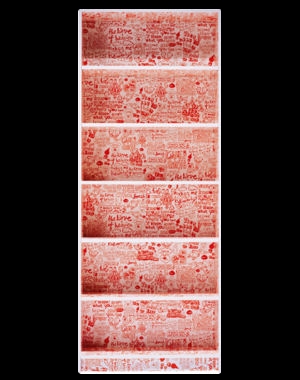
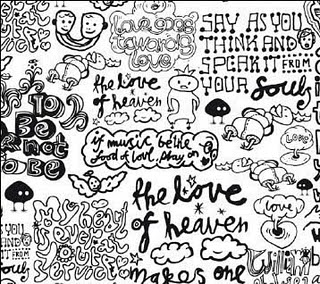
The Billy Jader bookcase featured above comes in 3 different colors, whereas MY favorite item of book-modified furniture comes in FAR, FAR more than that. Artist Mike Stilkey used the covers of old books to “augment” this piano, with which I am very much in love. (sigh) And what book does it make me think of…? (This should be an easy one, folks!) Mysterious Thelonious by Chris Raschka. (Listen to it free online!) Ten points to everyone who guessed correctly. If you had a different idea, I’d love to know what it was.
Finding room for this piano might be a challenge in smaller spaces, but you can still look to Mike Stilkey to bring books to your space on a much more manageable level, size-wise. He does paintings on the spines of books that would fit nicely on almost any wall. (Seeing these makes me REALLY want to line up a stack of library discards and break out the paint!)
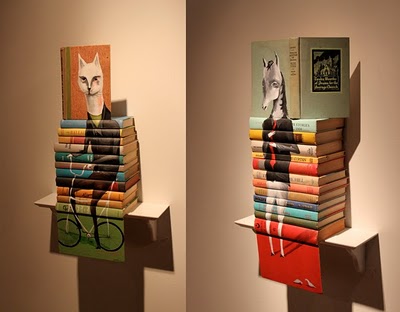
Artist Laura Cahill is also finding at-home inspiration from books. I am personally coveting her Heavy Read stool (and, yes, you can actually sit on it!), but maybe you’d be more keen on her Reading Lamp (in photo next to stool — yes, it’s made out of books) or one of her Book Vases?
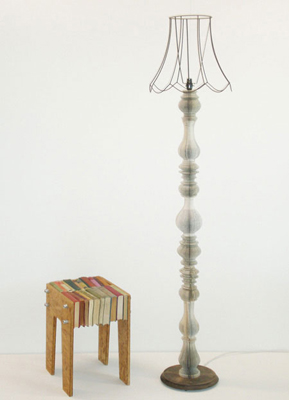

Normally I would say that fungus is NOT something you want to have in your home. But faux fungi made from handmade books? That’s another story! I love these fantastic paper sculptures created by Melissa Jay Craig for her (S)Edition exhibit at the Morgan Art of Papermaking Conservatory and Educational Foundation in Cleveland. If you’re enamoured with them too, note that in a blog post back in February, Melissa said, “I am searching for a 2010 venue for (S)Edition, and I would love to see it in an alternative to the gallery; I would love to see all 99 copies installed in a working library, for instance. Any ideas, anyone?” Those of you with ideas can comment on Melissa’s post or get in touch with her using the contact info on her website. Be sure to also check out her Current Portfolio, where you’ll find more remarkable book art.


And one more wall suggestion: I left Wellesley Booksmith before I’d been able to read the picture books on all the major publishers’ fall lists, but my brief visit with the Houghton Mifflin Harcourt kit had me oohing and ahhing over the incredible woodcut illustrations Rick Allen created for Joyce Sidman’s forthcoming book Dark Emperor and Other Poems of the Night (September). The art he created for this book matches the beauty of Joyce Sidman’s poems, which is (as you all know) is an EXTREMELY high compliment! Wanting to see more of Rick’s work I visited the website for his studio, the Kenspeckle Letterpress, where I fell in love with print after print after print. Pasted here are a few of my favorites, but WOW was it hard to choose! This is one “newcomer” to the children’s book world who is clearly not a newcomer to the art of wood engraving. I predict that an onslaught of contract offers will soon be headed Rick’s way…
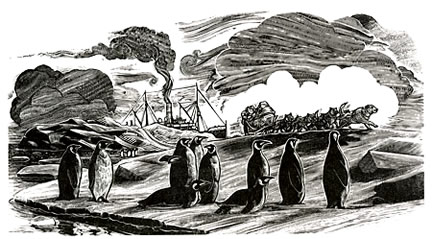


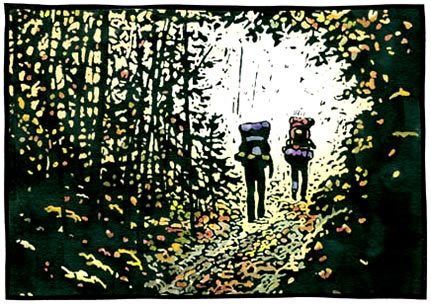

And now… Back to packing!
Another Way of Working with Teachers
Josie Leavitt - July 29, 2010
Every independent bookstore needs to distinguish itself from the chains and online retailers. One really effective way to do this is to provide a service the competitors can’t: you and your knowledge. I’m not talking about handselling or customer service, I’m speaking of providing teachers with their mandatory continuing education credits.
This August Elizabeth and I will be leading two days of in-service training for our local school district. I don’t know yet how many teachers will sign up, but since the district pays for it so it’s free to teachers, I suspect we’ll have a good turnout.
I approached the head of Curriculum Development for the our local district in April about my desire to work together. She was incredibly receptive and really wanted to “keep it local.” She told me what the district needed in terms of hours, content to be covered and what they could pay us. Elizabeth and I then submitted proposals and now we’re planning our sessions.
The real beauty of this is tri-fold. First, we have a captive audience of teachers, many of whom might not be familiar with the Flying Pig, so it’s chance to gain new school orders. Second, we have a chance to really showcase our knowledge of books, which the teachers can use in their courses that fulfill the Vermont curriculum guidelines. Thirdly, I think it will be a great thing for us, and our staff, to know better the Vermont educational goals for each grade. This does not change by district, so I will be more able to help any Vermont teacher find interesting, new books they can use for instruction or enrichment.
Working with the school district makes it easier for us because they do all the work. They set up the dates, they do all the paperwork and coordination. We just work very hard to make the presentations meaningful and fun.
I’ve been going through all my buying sessions this summer with an eye toward the curriculum in a way I never have before. Historical graphic novels I might have passed on, I’m now considering more closely. The fun part of preparing for this is seeing how to think outside the box. Can fantasy novels be used to help explain government and societal changes? Totally. My goal with my educational sessions is to present, essentially booktalk in-depth, with supplemental ideas, books that will help social studies and language arts teachers meet the curricular goals they have to set before them. Each teacher will get a goody bag of some kind. We’ve got lots of posters and teacher materials to give away, will which hopefully be meaningful for the teachers, besides, who doesn’t like free things?
It’s actually really exciting for me to help teachers plan part of their year. Teams come together to plan out units. So, we could see a unit develop at the session based on some of the new books we’ll be presenting. I think that’s really powerful and I can’t wait. The goal of this is to make real human connections with teachers in third through eighth grade, and hopefully these connections will last into ordering season. After the presentations, I’ll post an update on how it went. For now, I’ve got my notebook with me everywhere and I’m a note-taking fool.
Crying in Public
Josie Leavitt - July 27, 2010
I think it’s happened to all readers with a heart: you’re reading in public, say a plane or train, and suddenly you find yourself in tears because of what’s happening in your book. I found myself in just this situation last week on a plane to Chicago.
I was reading a galley of Sorta Like a Rock Star and I was overtaken and just started crying, a little at first and then a little bit more. I had no tissues, napkins or anything to wipe my eyes or nose with, so I resorted to dabbing at my eyes with a spare scrunchie that was wound around a my wrist. Luckily, I had no seat mate, but I had a very concerned flight attendant who checked in with me, not once, but twice. Clearly she didn’t believe me about being so moved by a book, I just had to weep a little. Each time I waved her off. Finally, I just had to put the book away for fear I’d struck some main line of tears, and as much as I was enjoying the book, I didn’t want to cry all the way to Chicago.
I know I have customers come into the store very angry with me because they outright sobbed at the last thirty pages of The Book Thief while they were flying home from vacation. “Why didn’t you warn me?” Well, telling customers when they’re likely to sob during a book isn’t part of my job. Although, I will say, I have amended my handselling for The Book Thief to say, “If you have a heart, you will cry at the end of this book. Be mindful of that when you’re on a plane.”
I must say, even crying at home can cause concern. I was reading Harry Potter and the Half-Blood Prince outside on my deck and I was sobbing so hard at the death of Dumbledore, I could barely contain myself. I just wasn’t expecting him to be, you know, totally dead. I just sobbed. First my dogs came out to see if was I was okay. Then Elizabeth, who knew what I was reading, came out with a box of tissues.
Books should move us. A good book can give us the whole range of human emotion. The good thing for me is I’ve got Christopher Moore’s Fool to read at the beach during vacation, so hopefully people won’t be concerned for me, they’ll just think I’m a lunatic for laughing at every page.
Special Order Messages
Josie Leavitt - July 26, 2010
I think everyone views their bookstore a certain way. I always think of the store as the Flying Pig. So, when I call people about special orders it’s always fascinating to hear we’re actually called when messages get relayed. We make a point to say “Your book is in.” We never tell the title, because, as I like to say, you only need to ruin someone’s birthday once and you’ll never do it again.
– One husband just says, “It’s them again.”
– We’re often referred to as, “the Pig for you.”
– “Your book’s in at the Pig.”
– “It’s the lady (am I old enough to be a lady? when did that happen?) from the bookstore.”
– “It’s Elizabeth from the bookstore.” Gets shouted to someone in the house. No, actually, it’s Josie, but folks are forever confusing us. People actually get mad when they find out we’re not sisters, or in some case, twins. Really? If you look closely, there’s nothing twin-like about us.
– Messages left with little kids kill me. “I’ll tell Mommy about the book.” They’re earnest, but I hang up knowing Mommy isn’t going to get the message. Ever.
– Then there are the teenagers who answer the phone and tell you to call back so you can leave a message because they won’t take a message. And then you call back, and they answer the phone, again. Seriously, just write a small note.
– Every once in a while I’ll call a house about a book, and I know the man answering the phone is the gift recipient of the book and he’ll ask and ask, “What’s the book? What’s the title? What’s the book about?” It’s actually funny because men are the most persistent questioners about potential gift books. I never waiver and I hope they don’t get mad.
– The ones I love to call are the eight to twelve year olds who are thrilled that their book is in and they shout, “Mom, we gotta go to the Flying Pig!” And in ten minutes they arrive, with the child hugging the book and then reading on the way out.
The Season of Windblown Hair — Or, the Zeitgeist of Book Covers
Elizabeth Bluemle - July 22, 2010
I’m so curious about how book-jacket trends develop. It’s probably just something in the zeitgeist that brings a whole season of, say, close-ups of hands or stripey socks and tennis shoes or flowers illuminated as if shot on a lightbox. Or close-ups of girls’ faces, or face parts, or the backs of teenagers’ heads, or blue-jeaned hips. Or, for that matter, entire herds of dustcovers with photos of dramatically lit girls framed by dark foliage or fabric.
But I like to imagine a sort of book-cover Bryant Park fashion show, setting the trends for an upcoming season. It would go something like this:
Welcome, designers! So good to see you. We’re excited about the shape of book fashion these days; there are so many striking covers, gorgeous images, playful fonts. Let’s get started. Bring out the models!
This year, we’re seeing a lot of florals:

Speaking of foliage, covers are really branching out:

Wings are not walking the runway as often this season as they were last fall, but they’re still making a bold statement:

Ladies and gentlemen, if you’re trying to find the true key to your readers’ hearts, look no further:

The male silhouette is enjoying a renaissance not seen since the 1970s. To a lesser degree, women and two-headed butlers try on this style. It’s catching on like a house afire. It’s always chic to flaunt a bold silhouette.

Also on the runway: photographs of modern girls in period costume. It’s a trend that’s gaining momentum.

No matter what century, gowns are always a la mode. They look particularly fetching against a natural background:

A hair tip for you ladies: girls these days are wearing it straight, long, and across their faces. (Edited to add some examples pointed out to us by alert reader Kelly Jensen, whose book-related blog is called Stacked.)

Sometimes, a girl finds herself alone out in the big wild world. Once in a while, she has someone to share it with.

Speaking of couples, hands are in favor this season. lovers holding hands, almost holding hands, holding hands behind their girlfriends’ backs, hands forming hearts and stars, holding objects, hiding things…. Well, you get the picture.

Do you have a face prepared to meet the faces you will meet? Below is just a sampling of the year’s models. Here’s looking at you, kid!

Tell me, fashionistas: what trends have you spotted? And what do you predict for next year?
“Don’t Got No Books at Home”
Josie Leavitt - July 20, 2010
Every once in a while I am reminded that not everyone has books at home. Yesterday was that day. Our store is in Shelburne, Vermont, a somewhat affluent town in Chittenden County. I naively assume that everyone who wants them, has them. I know this sounds ridiculous, but sometimes I forget that books are not in every home.
One of my favorite teachers came in yesterday. Jen gets to know all of her students, whether they’re in her regular class during the year, or in her enrichment class during the summer. She handpicks books after getting to know the students. We were talking a mile a minute, pulling books as she spoke, until she came to Lewis. She paused after saying his name and touched her hand to her heart and said, “I asked him what were his favorite books from home. And he said ‘Don’t got no books at home.’ ”
We both just stood there. No books at home.
I couldn’t imagine what that would be like. I told Jen when she came back later in the week, I’d have some galleys for her to share with him. This situation, sadly, is repeated in homes all over the country. While I can’t do something for every child who needs it, I can do what I can do in my part of the world. Galleys are great, but they are not the solution for all the kids who need books.
I remembered about First Book, the organization whose sole mission is to get books into the hands of children who don’t have books at home. First Book provides young children with books, as does Reach Out and Read, which works with pediatricians all over the country. The need for books for kids under age six is great and these two organizations do a great job at getting books to these kids. But older kids still need books.
Reading Is Fundamental fills the void nicely. They work to get books to any child who needs them. Our store works with RIF annually by having an in-store book donation drive. Customers got a discount for any book they donated to RIF. This is a win-win for everyone.
So, as I pack up a box of galleys for Jen to share with Lewis and others in her class who need them, I am heartened that there are organizations available to kids who need and want books. If there are other organizations that distribute books and I’ve omitted them, please let me know and I can add them.
Summer Vacation Reading
Josie Leavitt - July 19, 2010
I am going to the Cape next week for a six-day vacation. I am thrilled to be taking a break from the rigors of the store and actually getting out and enjoying the summer. As I get ready to pack I am struck by the vexing problem of what to bring to read. I know some of you out there will say, “Get an E-reader and bring everything you want.” But I am a book person. I have tried to read things on an iPad and a Kindle and don’t much care for it, so it’s books for me.
I think I will bring four or five books. I know I’ll probably only read two, although, if it’s rainy, the sky’s the limit. I need your help as I am overwhelmed by books and thus utterly incapable of making a decision.
So, here’s what I’m looking for:
– Adult fiction that’s funny
– Young adult fiction that is offbeat
– A classic that is compelling
– And lastly, a great mystery (I’ve already read all the Stieg Larsson books)
So, dear readers, help me with some book suggestions, and when I get back I’ll let you know what I read.
The Game-Changers of the Last 15 Years
Alison Morris - July 16, 2010
I’ve been weeding books at our house this week — a sad necessity of moving, but an interesting examination of my priorities too. With each title I’ve been asking myself WHY I feel the need to own it. If my reasons aren’t sound enough to justify it taking up space in our new apartment, then the book goes in the very large pile of books that will soon find new homes with local friends, local teachers, and the library of Camp Wing (where Gareth and I tied the knot almost a year ago!).
While wading through these books I’ve been thinking a lot about the changes in children’s and YA publishing in the last 15 years and thinking specifically about the titles and series that have, in some meaningful way, changed the landscape of publishing. I’m thinking not just of books that have been big or broken new ground, but of books that have made the publishing world think differently, or books that opened doors for writers to explore new avenues, or books that have helped us unearth new corners of the literary marketplace.
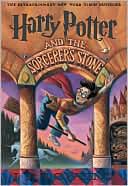 The biggest and most obvious “game-changer” of this sort was, of course, the Harry Potter series. Harry boosted children’s book sales across the board, raised the profile of children’s literature, lit a fire under publishers to publish more fantasy, removed much (though certainly not all) of the stigma from said genre, turned countless reluctant readers into avid ones, and prompted a flood of new middle grade fantasy series to land in stores, each being promoted as “the next Harry Potter.”
The biggest and most obvious “game-changer” of this sort was, of course, the Harry Potter series. Harry boosted children’s book sales across the board, raised the profile of children’s literature, lit a fire under publishers to publish more fantasy, removed much (though certainly not all) of the stigma from said genre, turned countless reluctant readers into avid ones, and prompted a flood of new middle grade fantasy series to land in stores, each being promoted as “the next Harry Potter.”
(Note that any book that spawns such comparisons — that becomes the object following the word “next” in ad copy — is almost always a game-changer.)
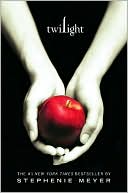 And then there’s Twilight — the phenomenon YA fiction has been waiting for. First the teenagers of the world fall under its sparkly-skinned spell, then their mothers (and a handful of fathers) follow suit, and suddenly reading (and reading YA novels) looks COOL again! Hallelujah! The upshot it that YA sales are looking good. The down side is that the shelves of every YA section are now overloaded with paranormal romance, each touted as “the next Twilight.” There’s your final proof that Twilight has changed the game.
And then there’s Twilight — the phenomenon YA fiction has been waiting for. First the teenagers of the world fall under its sparkly-skinned spell, then their mothers (and a handful of fathers) follow suit, and suddenly reading (and reading YA novels) looks COOL again! Hallelujah! The upshot it that YA sales are looking good. The down side is that the shelves of every YA section are now overloaded with paranormal romance, each touted as “the next Twilight.” There’s your final proof that Twilight has changed the game.
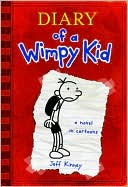 Now how about Diary of a Wimpy Kid? I think Jeff Kinney might be the fastest game-changer on this list. In record time he’s become the hero of kids aged 7-11, many of whom were not previously kids who rejoiced about reading. Generations of kids have been wetting their pants with laughter over Calvin and Hobbes, but it took a long time for anyone to take a character with similar (what shall we call them…?) “virtues” to Calvin and let him break out of the comics frame. Now lots of books combining both prose and comics in diary form are coming down the line.
Now how about Diary of a Wimpy Kid? I think Jeff Kinney might be the fastest game-changer on this list. In record time he’s become the hero of kids aged 7-11, many of whom were not previously kids who rejoiced about reading. Generations of kids have been wetting their pants with laughter over Calvin and Hobbes, but it took a long time for anyone to take a character with similar (what shall we call them…?) “virtues” to Calvin and let him break out of the comics frame. Now lots of books combining both prose and comics in diary form are coming down the line.
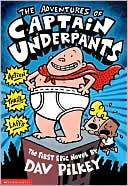 Of course, it’s possible to argue that Captain Underpants was the first to change the game in this prose + comics way. I’d definitely call the Captain a game-changer, but for a slightly younger audience than Jeff Kinney. The Captain showed the world that silliness is a solid lure for the beginning reader set. And that maybe even classroom teachers can embrace a bit of bathroom humor, if it keeps kids reading.
Of course, it’s possible to argue that Captain Underpants was the first to change the game in this prose + comics way. I’d definitely call the Captain a game-changer, but for a slightly younger audience than Jeff Kinney. The Captain showed the world that silliness is a solid lure for the beginning reader set. And that maybe even classroom teachers can embrace a bit of bathroom humor, if it keeps kids reading.
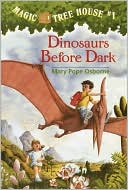 And speaking of keeping kids reading… How about Magic Tree House? Just because they can’t handle a lot of words per page doesn’t mean readers can’t handle 50+ books per series. I think it took publishers until this series to truly realize that.
And speaking of keeping kids reading… How about Magic Tree House? Just because they can’t handle a lot of words per page doesn’t mean readers can’t handle 50+ books per series. I think it took publishers until this series to truly realize that.
Other game-changers:
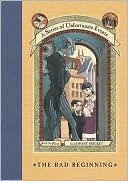 A Series of Unfortunate Events — though maybe not for all the reasons YOU’RE thinking of. I’m thinking this series changed the game by bringing paper-over-board to the mainstream. Yes, the Dear America books did it first, but those felt more… “educational” than the Snicket books did, and those books weren’t strictly a series. Suddenly Lemony Snicket’s books hit the bestseller lists and publishers are in love with books in POB. (Was anyone familiar with the acronym “P.O.B.” in the years before Lemony? We booksellers certainly weren’t.)
A Series of Unfortunate Events — though maybe not for all the reasons YOU’RE thinking of. I’m thinking this series changed the game by bringing paper-over-board to the mainstream. Yes, the Dear America books did it first, but those felt more… “educational” than the Snicket books did, and those books weren’t strictly a series. Suddenly Lemony Snicket’s books hit the bestseller lists and publishers are in love with books in POB. (Was anyone familiar with the acronym “P.O.B.” in the years before Lemony? We booksellers certainly weren’t.)
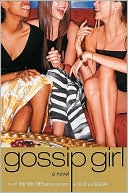 Gossip Girl. Like it or not, this series threw open the door for publishers to sign a stream of series I generally refer to as (ahem) B*tch Lit. Catty teens wear designer clothes and treat one another in generally appalling fashion, in the process upending the unwritten rule that books written for teens generally ought to impart (hmm… how to say this…?) “better” values? Higher priorities? A bit of wisdom, perhaps? An adult sensibility? Good role models? OR, if they aren’t going to do these things (and that’s okay too!) they should be relatively clean fun. They should not have “overly mature” content. Suddenly Gossip Girl, followed closely by The Clique and others in the same vein, arrives and provides teens with the kind of pop culture content and (in some cases) sex education that they previously got via TV, movies, and magazines. THAT, my friends, is game-changing.
Gossip Girl. Like it or not, this series threw open the door for publishers to sign a stream of series I generally refer to as (ahem) B*tch Lit. Catty teens wear designer clothes and treat one another in generally appalling fashion, in the process upending the unwritten rule that books written for teens generally ought to impart (hmm… how to say this…?) “better” values? Higher priorities? A bit of wisdom, perhaps? An adult sensibility? Good role models? OR, if they aren’t going to do these things (and that’s okay too!) they should be relatively clean fun. They should not have “overly mature” content. Suddenly Gossip Girl, followed closely by The Clique and others in the same vein, arrives and provides teens with the kind of pop culture content and (in some cases) sex education that they previously got via TV, movies, and magazines. THAT, my friends, is game-changing.
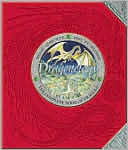 In thinking about game-changers I remarked out loud to Gareth that picture books and non-fiction are a lot harder. I can think of a lot of books that became bestsellers or were highly lauded, but few of them broke any new ground, format-wise, or spawned spin-offs (say that ten times fast) or initiated trends that I’m personally aware of. Gareth, though, suggested that maybe the Ology books fit the bill. This is a good suggestion, I think, though maybe one with a shorter-lived impact in the trend-setting arena. Definitely these books established a new way of engaging readers and organizing content. And they did indeed prompt many a publisher to try creating their own Ology-esque books and sell them to the same audience. But at our store we witnessed a significant dwindling of interest in said format after maybe 2 or 3 years of Ologymania. So… Were these books game-changers? Yes. But are we still feeling their impact? Hard to say.
In thinking about game-changers I remarked out loud to Gareth that picture books and non-fiction are a lot harder. I can think of a lot of books that became bestsellers or were highly lauded, but few of them broke any new ground, format-wise, or spawned spin-offs (say that ten times fast) or initiated trends that I’m personally aware of. Gareth, though, suggested that maybe the Ology books fit the bill. This is a good suggestion, I think, though maybe one with a shorter-lived impact in the trend-setting arena. Definitely these books established a new way of engaging readers and organizing content. And they did indeed prompt many a publisher to try creating their own Ology-esque books and sell them to the same audience. But at our store we witnessed a significant dwindling of interest in said format after maybe 2 or 3 years of Ologymania. So… Were these books game-changers? Yes. But are we still feeling their impact? Hard to say.
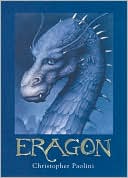 The Eragon series for me falls into the same category. Right after Christopher Paolini became the teen every kid wanted to be, I heard kids saying all the time, “Well, I’M writing a book right now, and…” The example that Christopher set for them was game-changing, and it showed in their deep, deep devotion to his books. But two things didn’t happen to keep that ball rolling, I think: 1) Chris’s audience aged out of the series while they waited and waited and waited for new installments to arrive, 2) Chris himself got older, and 3) there was no string of teen successes to follow his. The number of kids writing thousand-page fantasy novels fueled by Chris Paolini’s example eventually petered out. Had other teen writers hit the spotlight soon after he did, though, I think Eragon would have been a game-changer in a more meaningful way — in a “first book in a spate of successful teen publishing deals” way. I think then the trend of kids writing 1,000-page novels and harboring publishing dreams might have continued longer. (I’d have liked to have seen that happen.)
The Eragon series for me falls into the same category. Right after Christopher Paolini became the teen every kid wanted to be, I heard kids saying all the time, “Well, I’M writing a book right now, and…” The example that Christopher set for them was game-changing, and it showed in their deep, deep devotion to his books. But two things didn’t happen to keep that ball rolling, I think: 1) Chris’s audience aged out of the series while they waited and waited and waited for new installments to arrive, 2) Chris himself got older, and 3) there was no string of teen successes to follow his. The number of kids writing thousand-page fantasy novels fueled by Chris Paolini’s example eventually petered out. Had other teen writers hit the spotlight soon after he did, though, I think Eragon would have been a game-changer in a more meaningful way — in a “first book in a spate of successful teen publishing deals” way. I think then the trend of kids writing 1,000-page novels and harboring publishing dreams might have continued longer. (I’d have liked to have seen that happen.)
Was The Invention of Hugo Cabret a game-changer? I think it’s too soon to say. Keep your eye out for more novels illustrated in a similar fashion. The only one I can think of at present is A Nest for Celeste by Henry Cole.
Graphic novels have, collectively, been game-changers in the publishing world of late, but I don’t think any single book or series has particularly key in making that happen, do you? The same applies to celebrity books — was there one book that really established that trend? How about the trend of adult authors writing for children? Was any one of those books the true trend-setter or game-changer?
I’m really looking forward to hearing other people’s thoughts on this and curious, too, to hear if anyone (Authors/Illustrators/Editors/Agents/Book Packagers/Anyone!) feels their own personal work or work methods have been changed by specific books or series in recent years. What books do you think have changed the landscape of children’s and YA publishing in the last 15 years and in what way(s)? And what books have personally changed the game for you?

